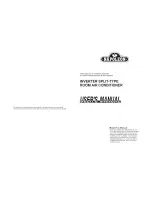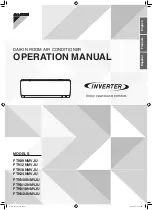
JOHNSON CONTROLS
18
FORM100.50-EG12 (918)
The return fan configuration is available in two forms: with and without an exhaust damp-
er. The option with the exhaust damper provides a means of building exhaust at the unit.
In some applications, the exhaust system is located elsewhere and the unit is not required
to provide building exhaust. In these situations, the Series 100 can be offered without the
exhaust damper to help reduce installed costs.
Exhaust/relief fans
– In this application, a powered exhaust fan may be suitable, how-
ever careful consideration of the fan type is necessary. Johnson Controls offers a centrifu-
gal powered exhaust fan to perform this function. Some manufacturers use a propeller
exhaust fan, which cannot handle the static pressure requirements.
For systems with moderate to low return static pressure, an exhaust fan is recommended.
The benefit of the exhaust fan is that it does not run all of the time, and may facilitate com-
pliance with the ASHRAE 90.1 fan motor horsepower requirement.
The exhaust fan operates in parallel with the supply fan. In this arrangement, the supply
fan handles the full static pressure requirements of the system. For normal building pres
-
sure control, the exhaust fan operates to draw air from the return plenum and exhaust it
out of the building.
The exhaust fan configuration is available in two forms, modulating and non-modulating.
Modulating is the most common and recommended for the majority of applications, while
non-modulating should be used only in certain circumstances.
In the modulating exhaust system, the volume of airflow exhausted from the building is
proportional to the entering volume of outside air. Control is accomplished via either a
discharge damper or a VFD. Johnson Controls recommends the use of a VFD to reduce
energy consumption, sound levels and improved reliability due to fewer moving parts.
In the non-modulating exhaust system, the exhaust airflow is constant whenever the ex-
haust fan is operating. This type of control should only be used to either assist a smoke
purge system or when a system requires a constant volume of exhaust airflow.
ACOUSTICAL CONSIDERATIONS
The Series 100 unit is designed for lower sound levels than competitive units by using flex-
ible fan connections, fan spring isolators, double-wall construction, multiple fan options,
and lower speed and horsepower fans. For VAV applications, VFDs are used instead of
inlet guide vanes. Additional sound attenuation can be obtained using compressor sound
blankets when necessary.
Even with these equipment design features, the acoustical characteristics of the entire
installation must never be overlooked. Additional steps for the acoustical characteristics
of a single package unit installation should be addressed during the design phase of a
project to avoid costly alterations after the installation of the equipment. During the design
phase of a project, the designing engineer should consider, at a minimum, the impact of
the equipment location, single package unit installation, building structure, and duct work.
Application Data (Cont'd)
















































